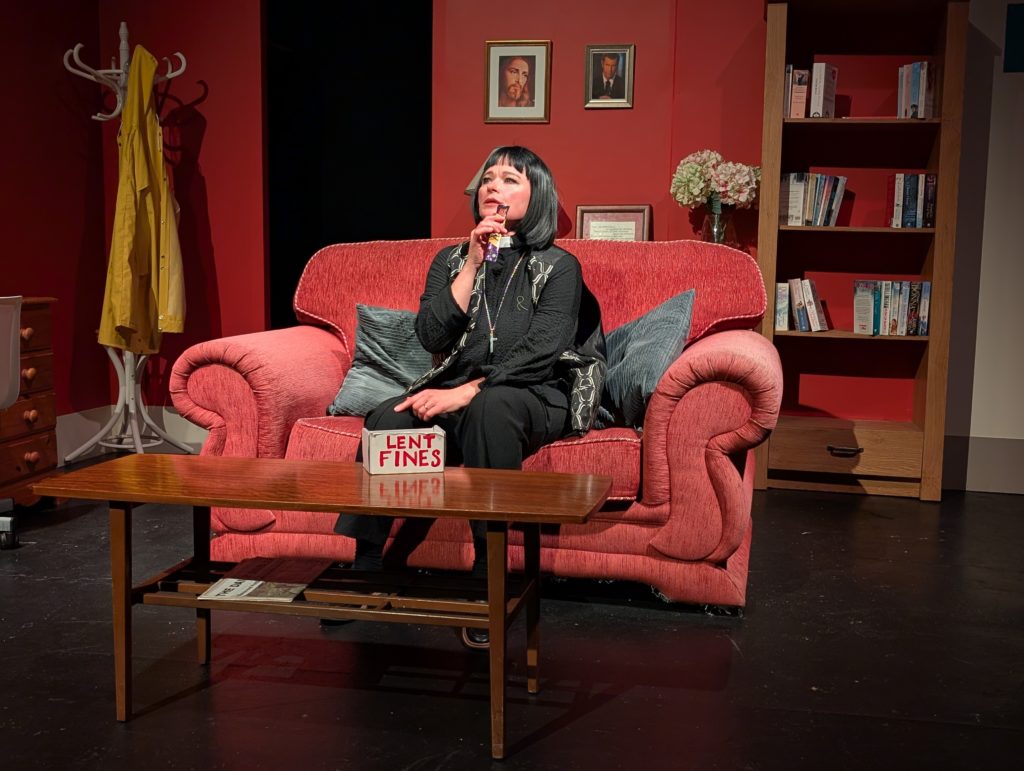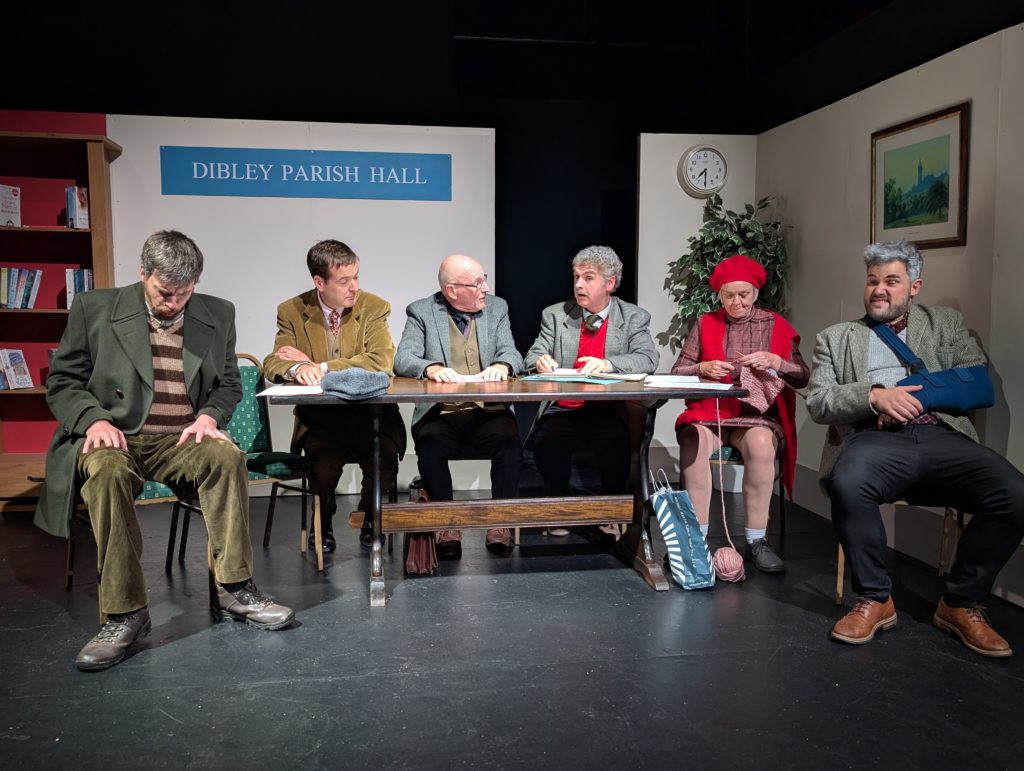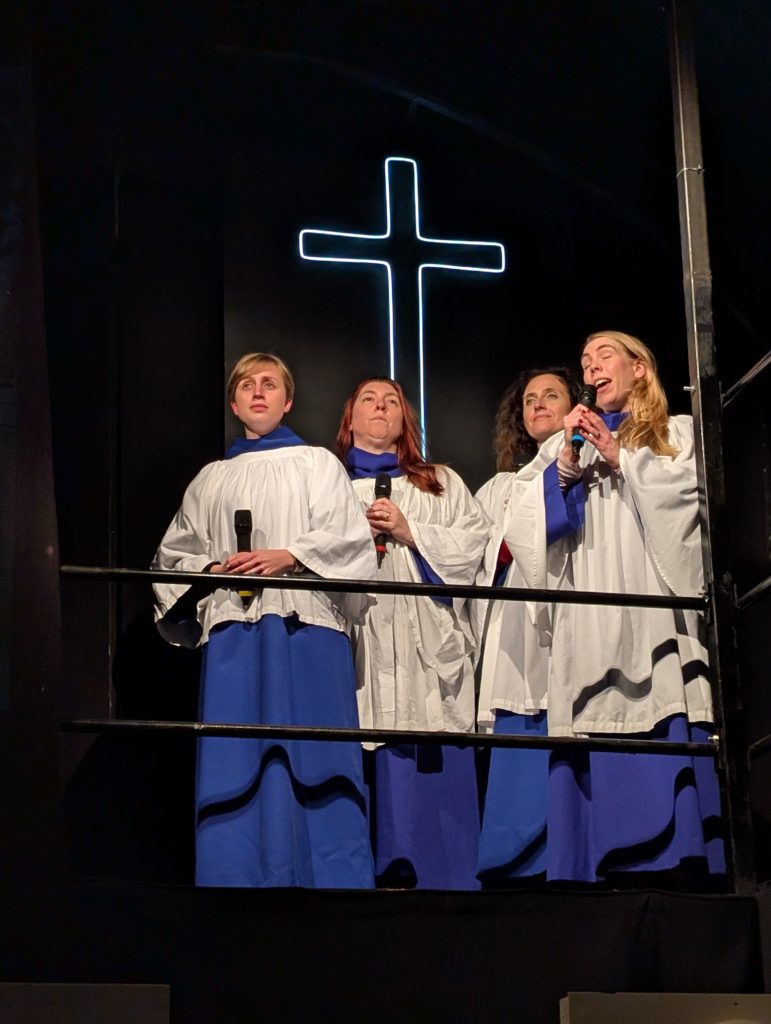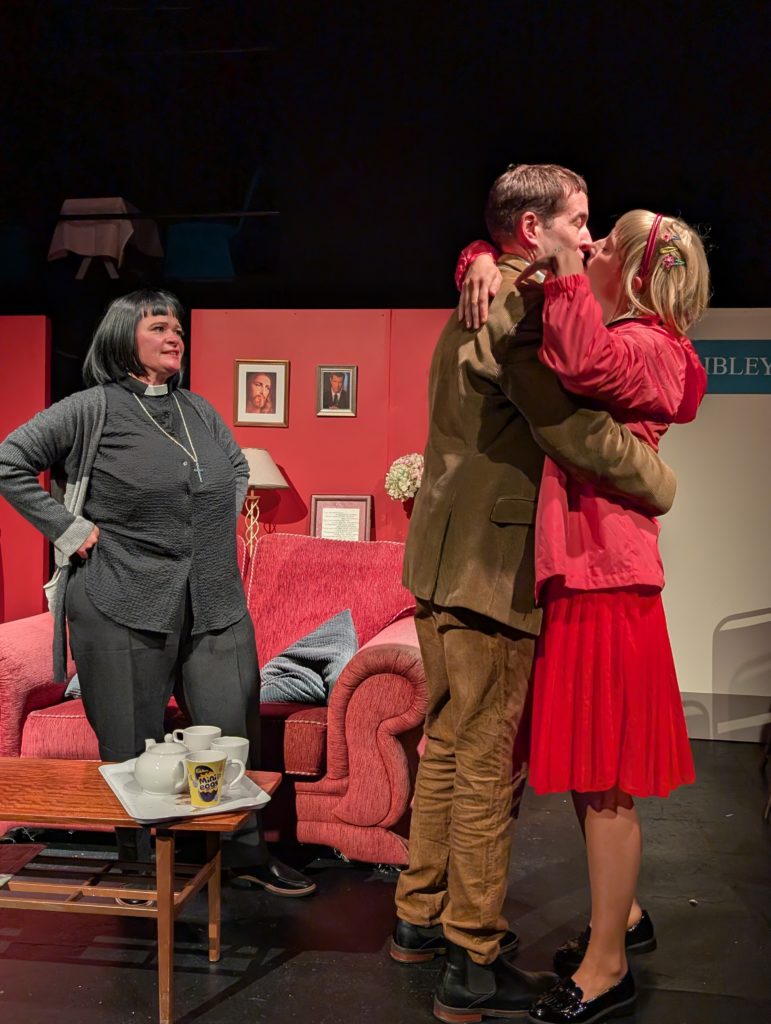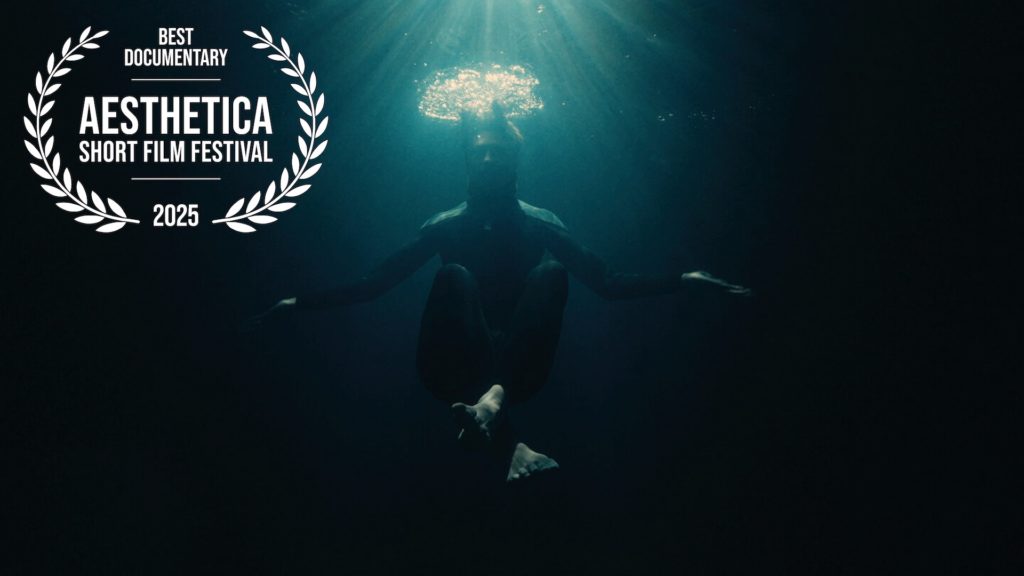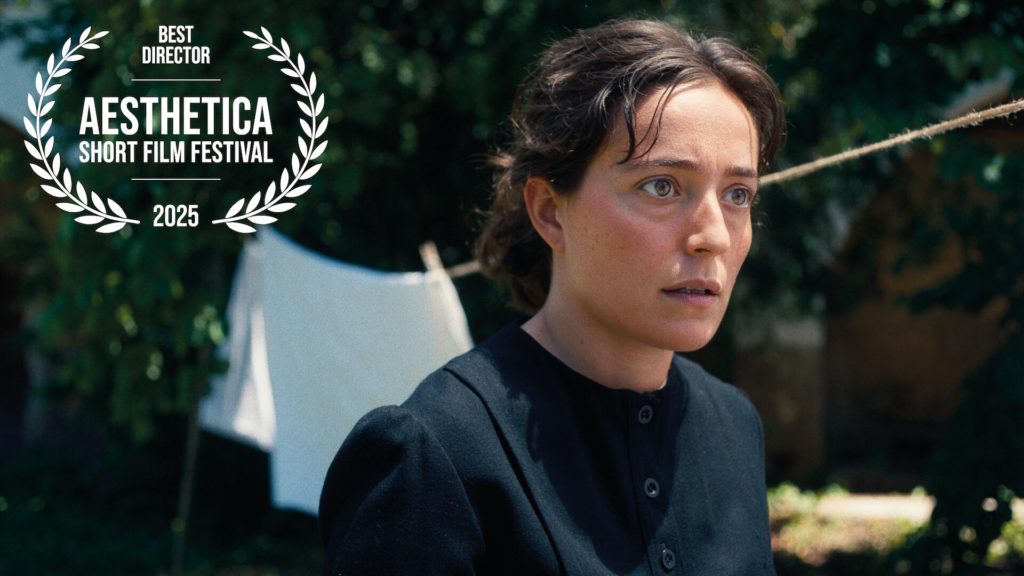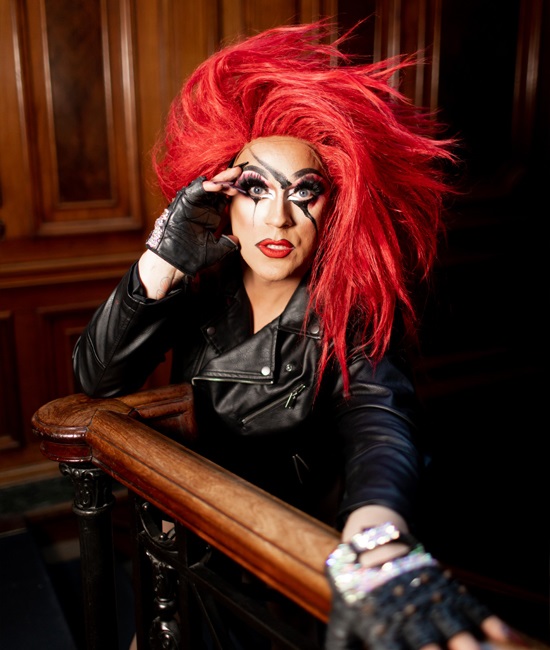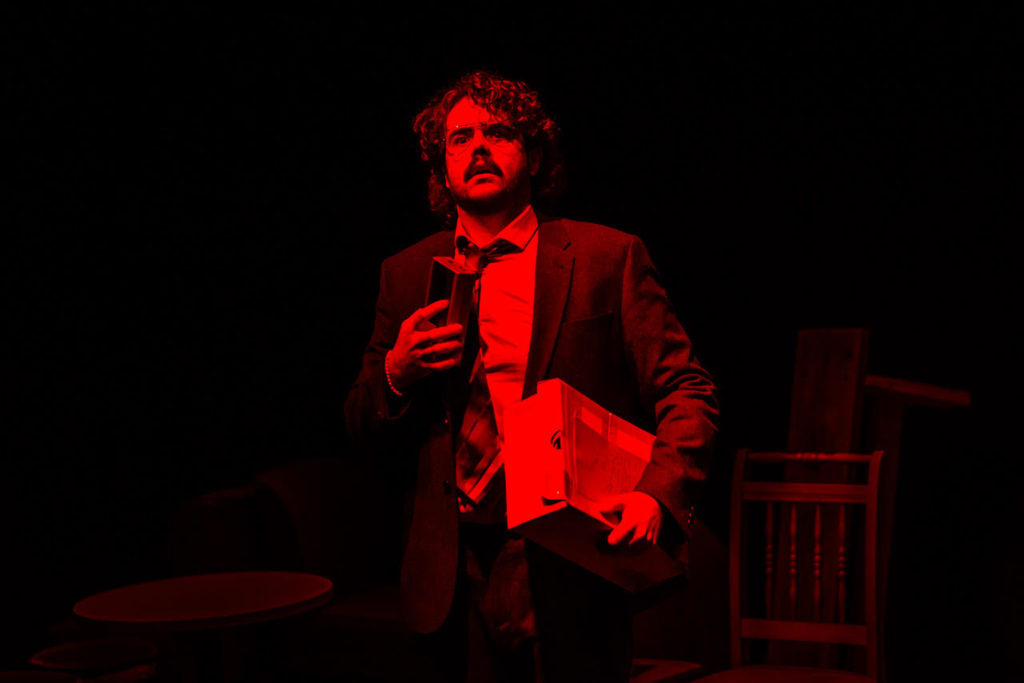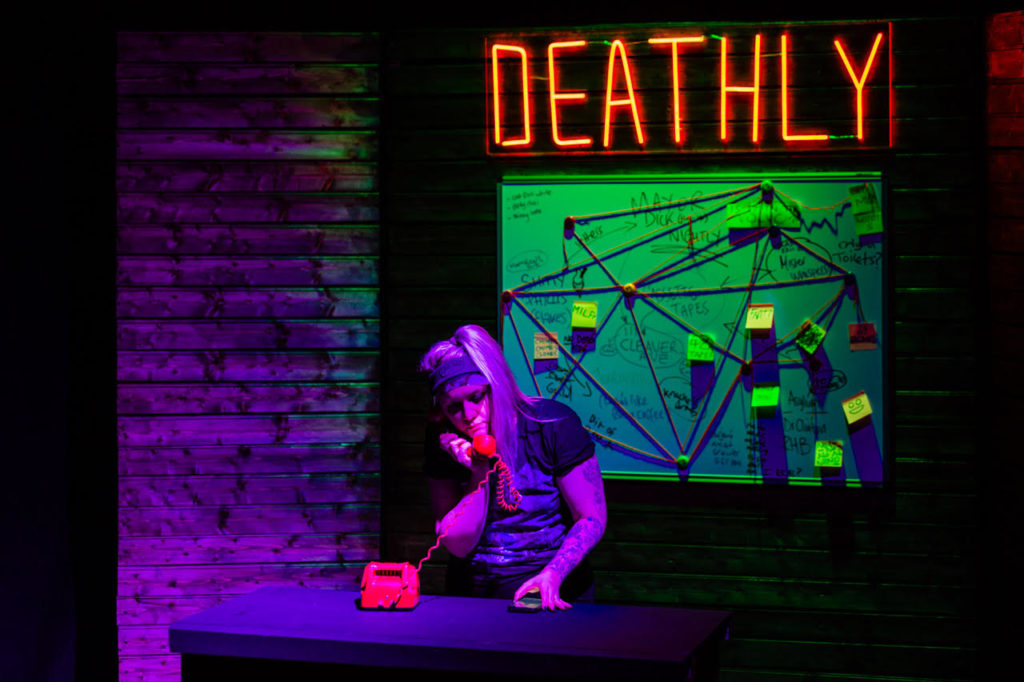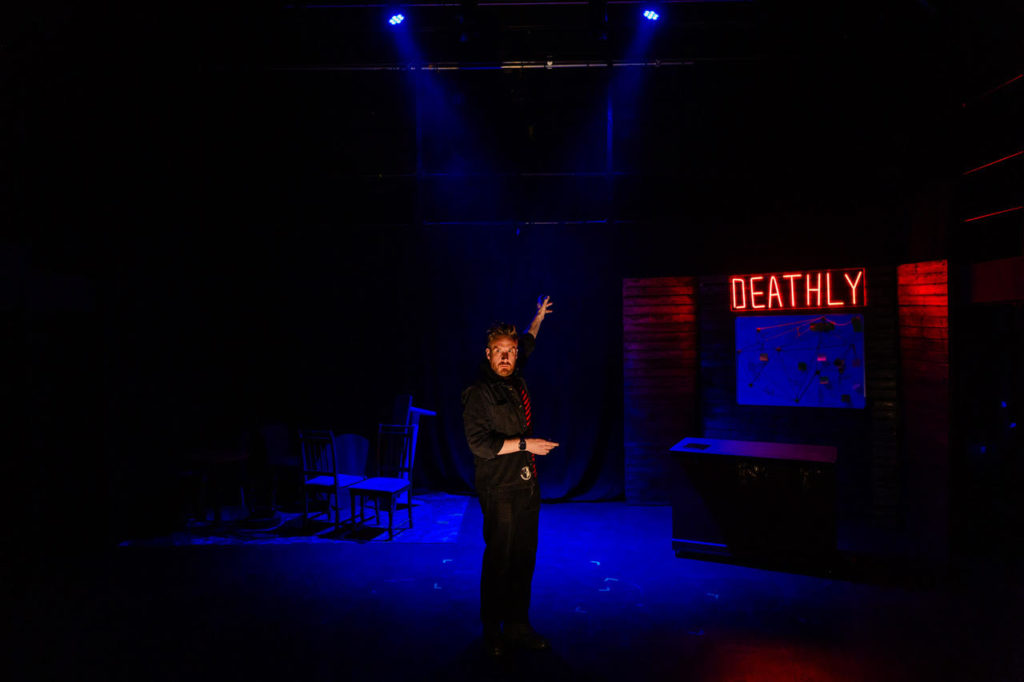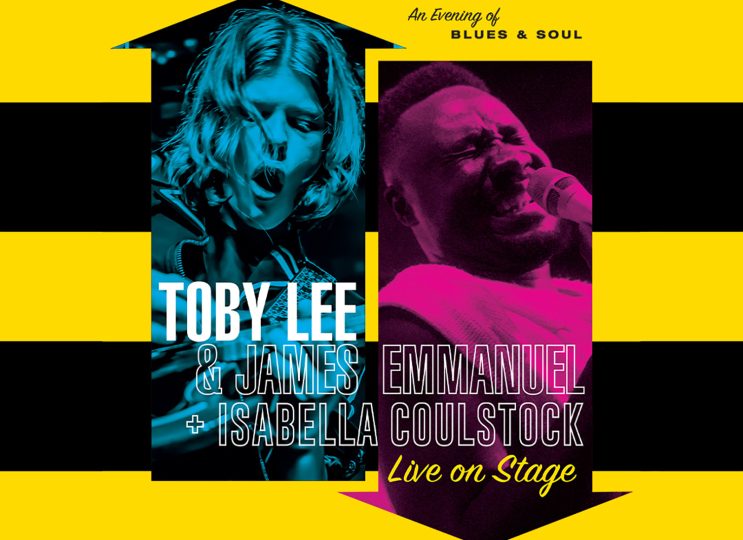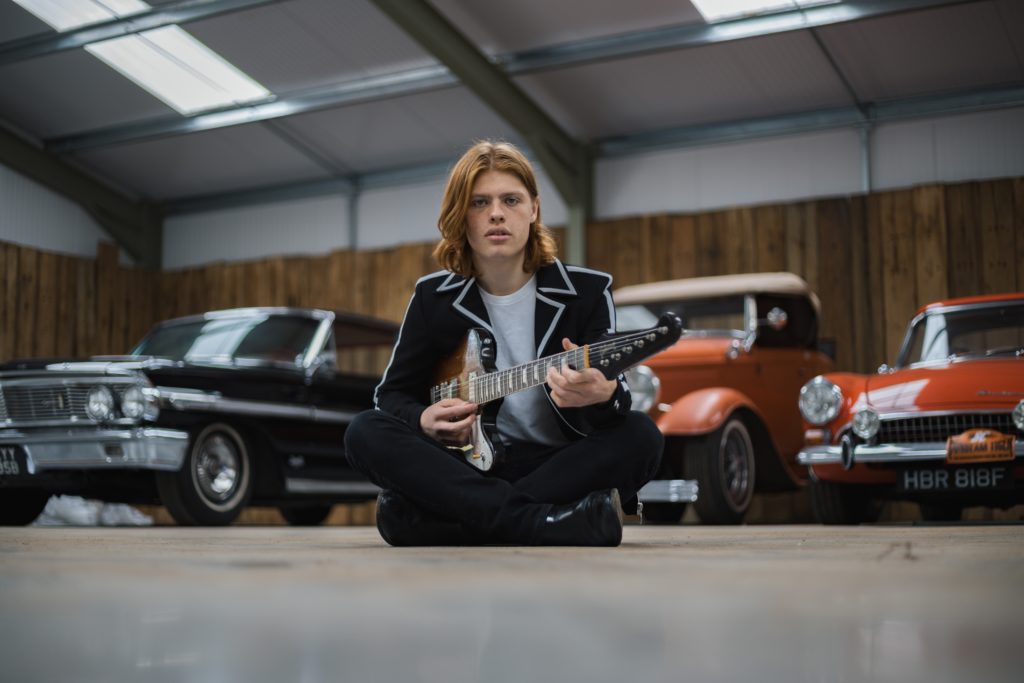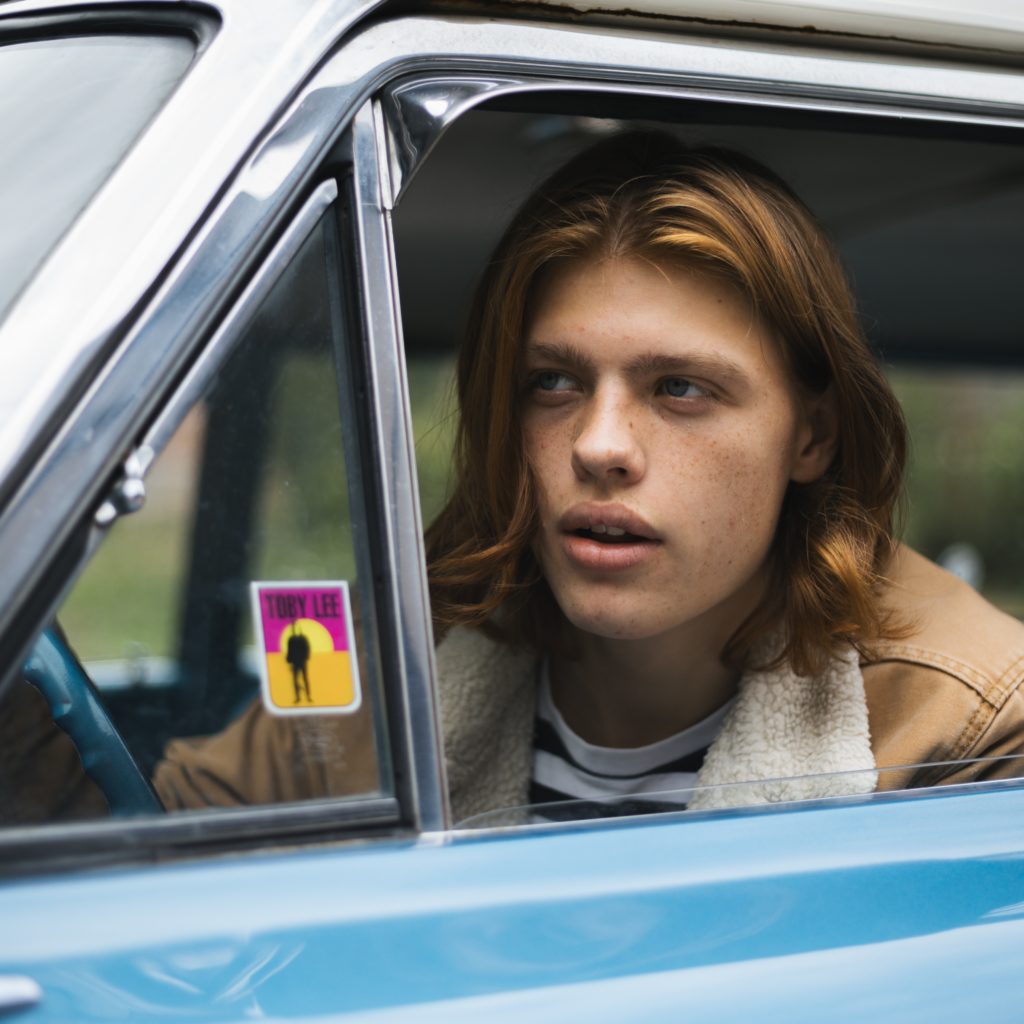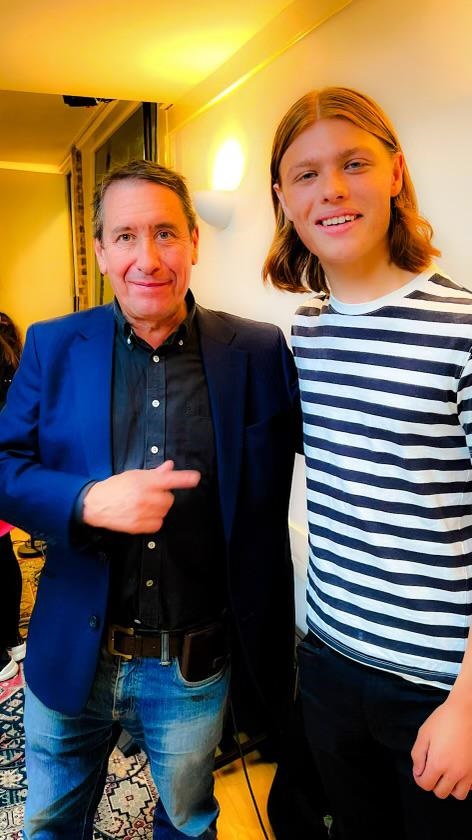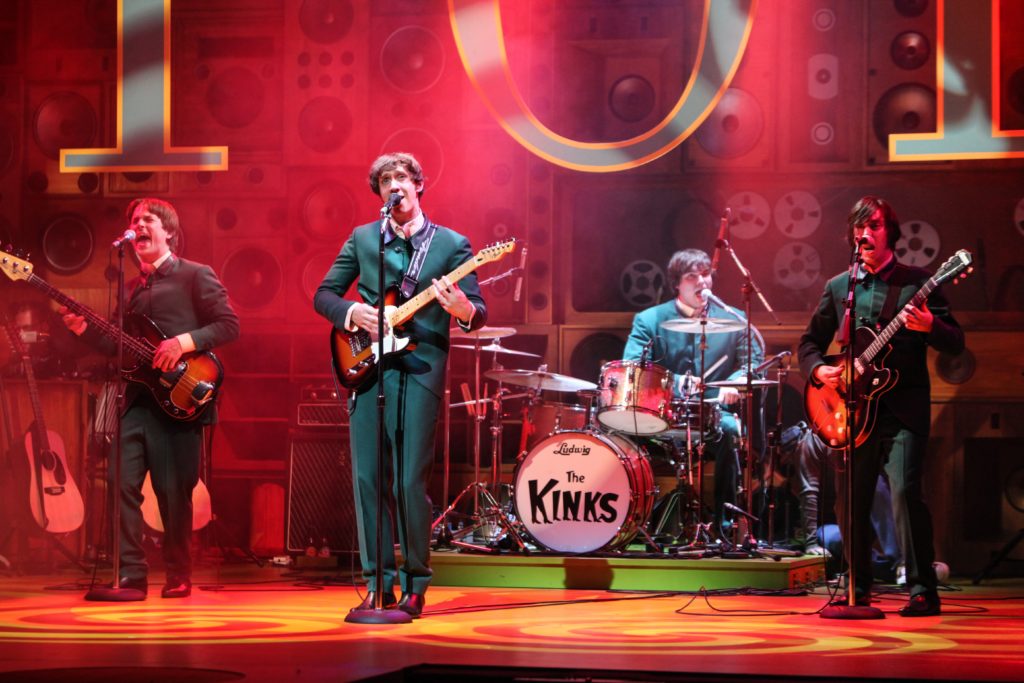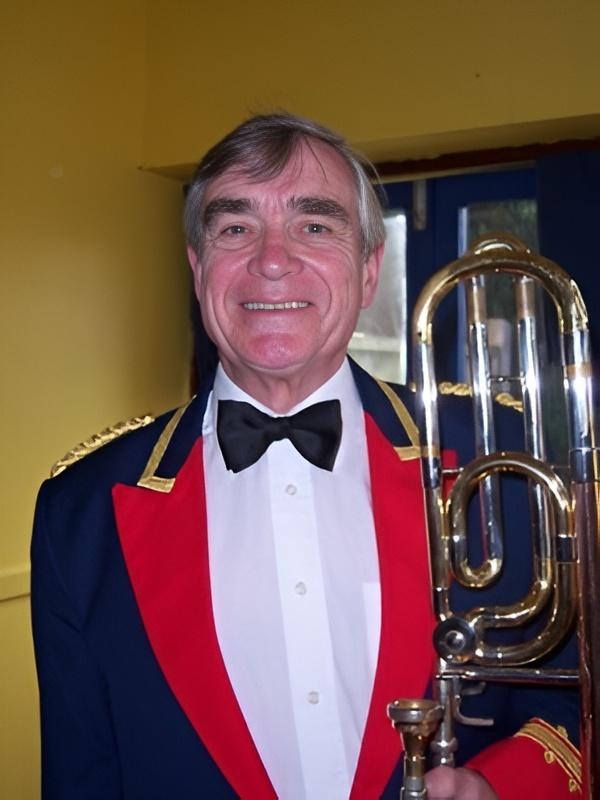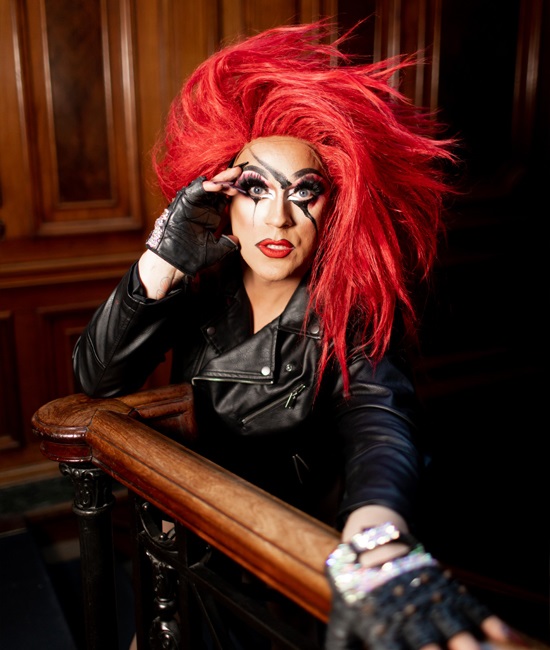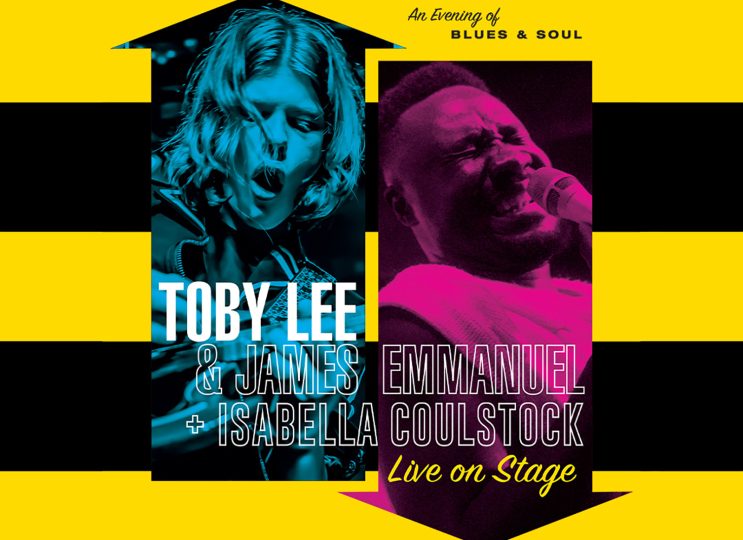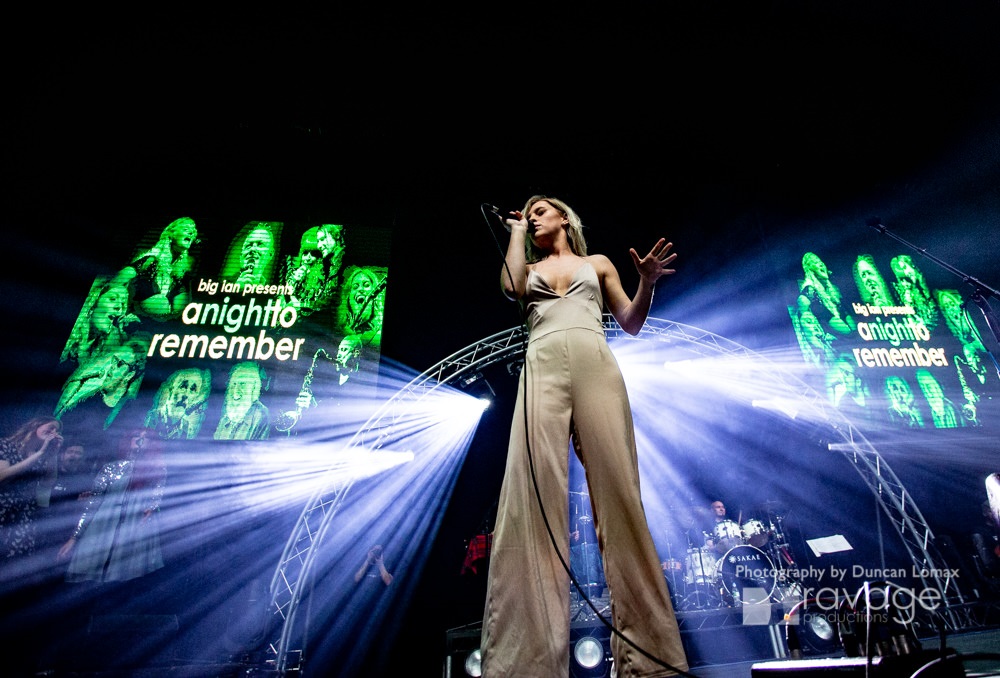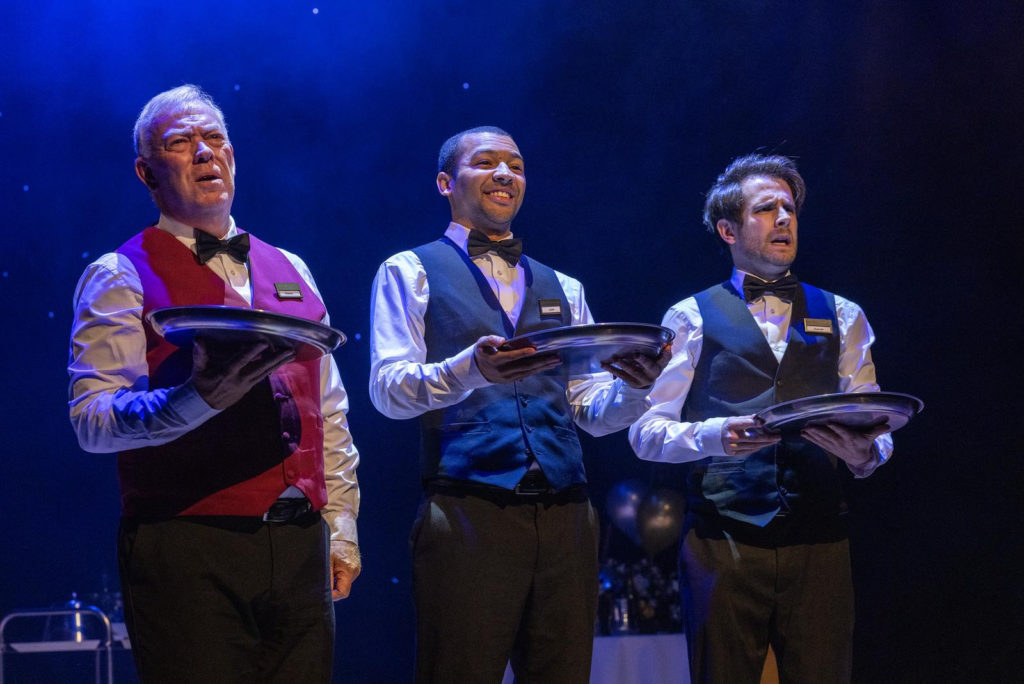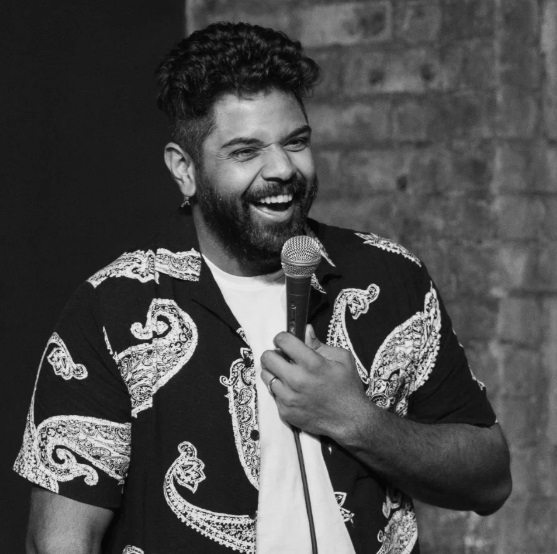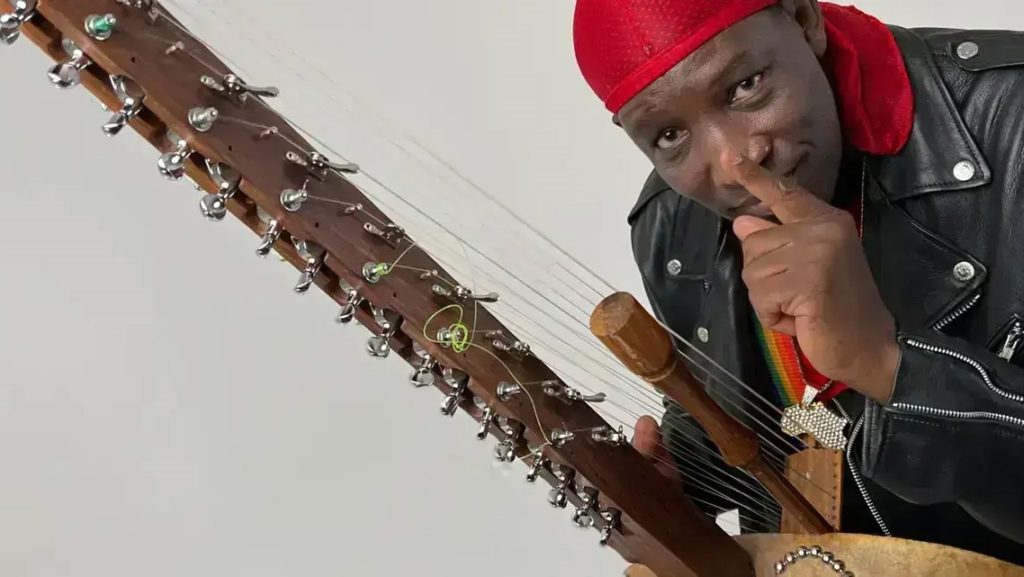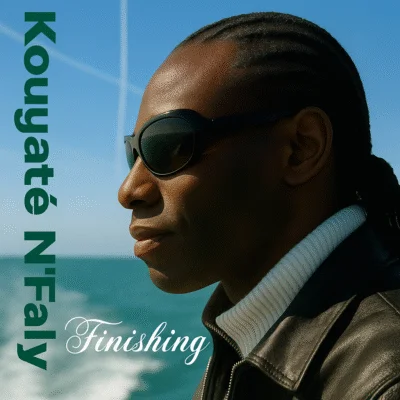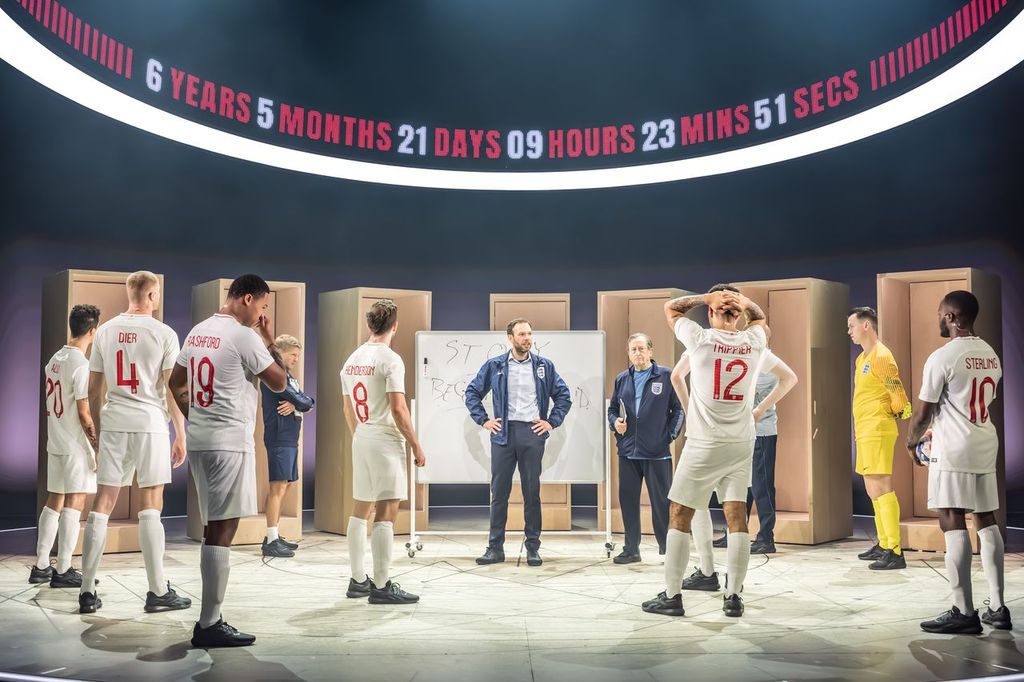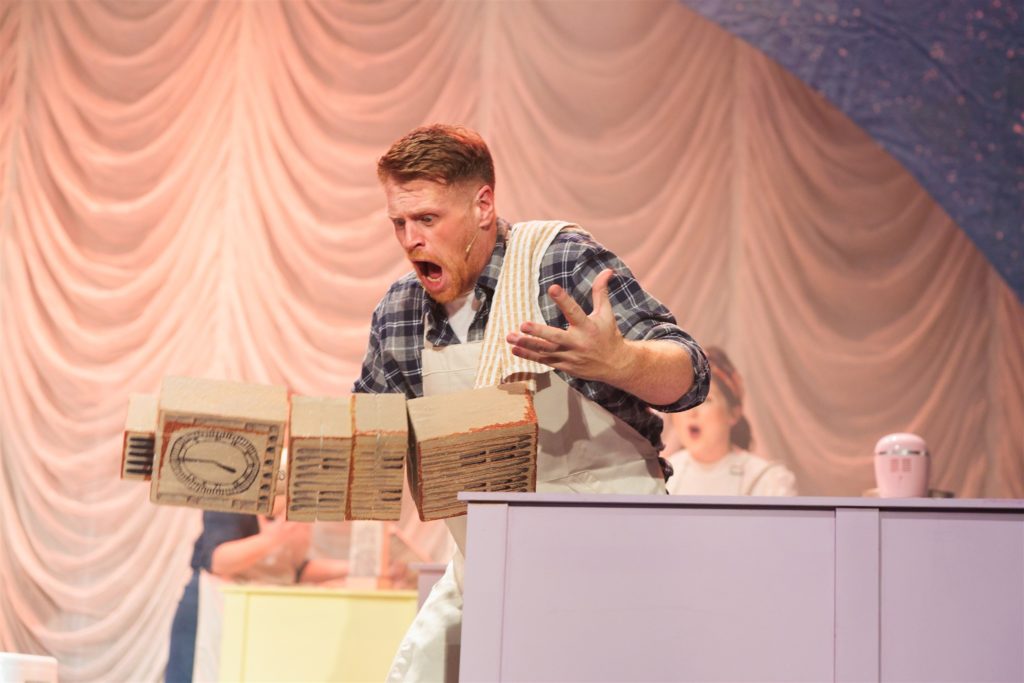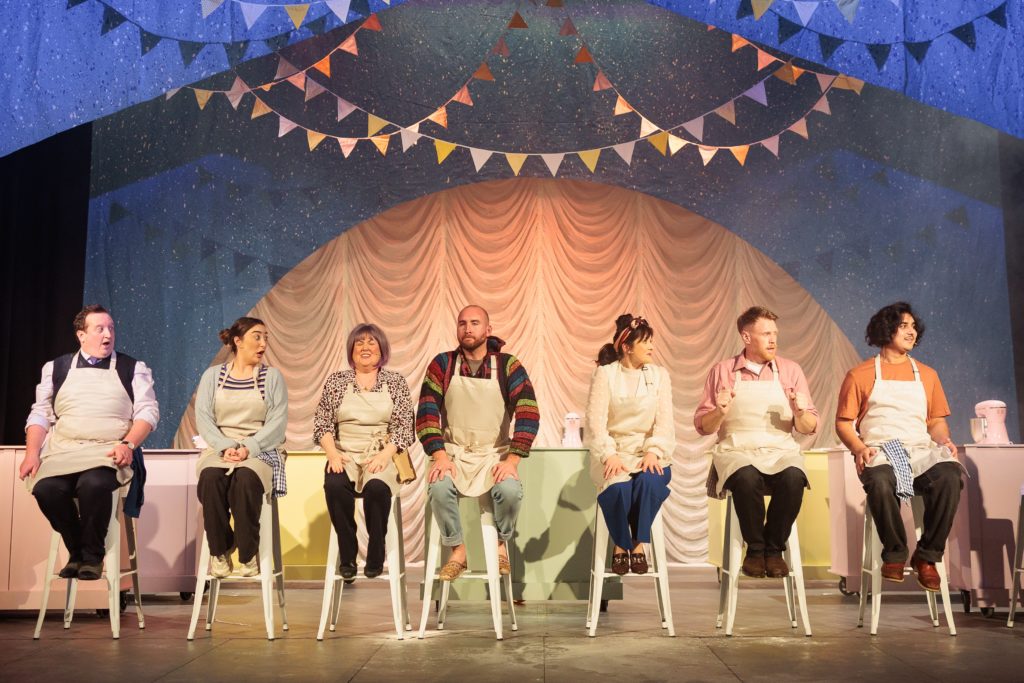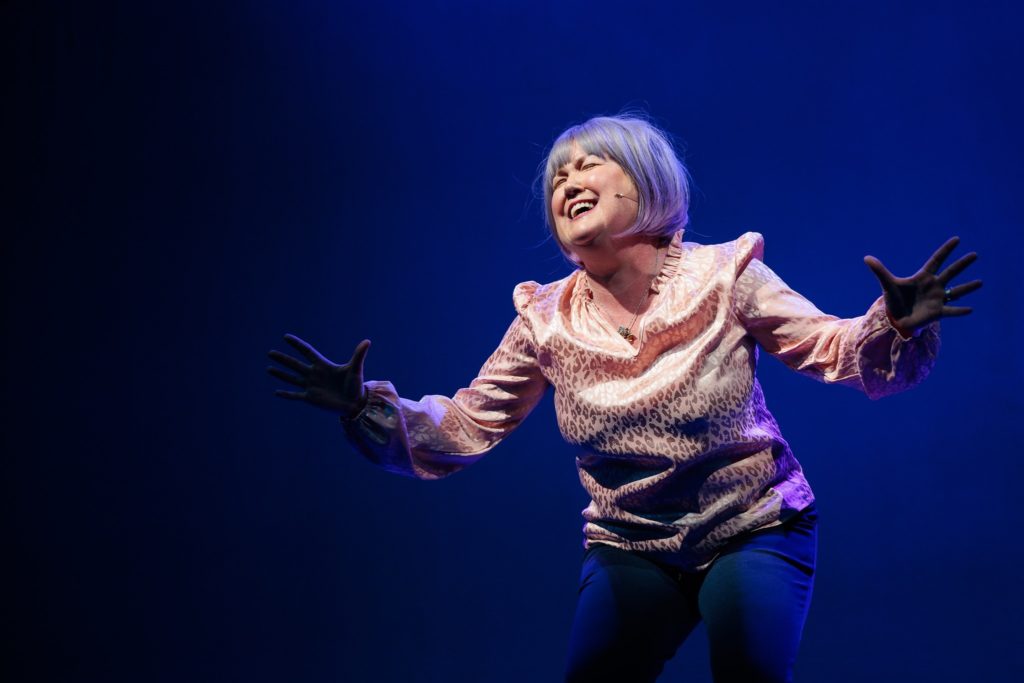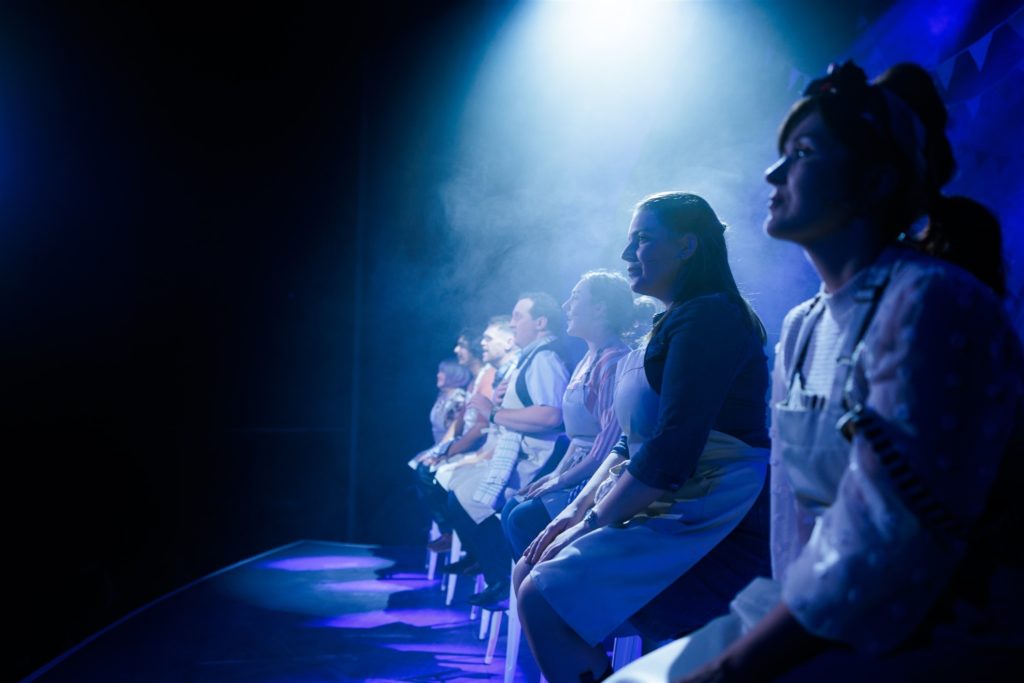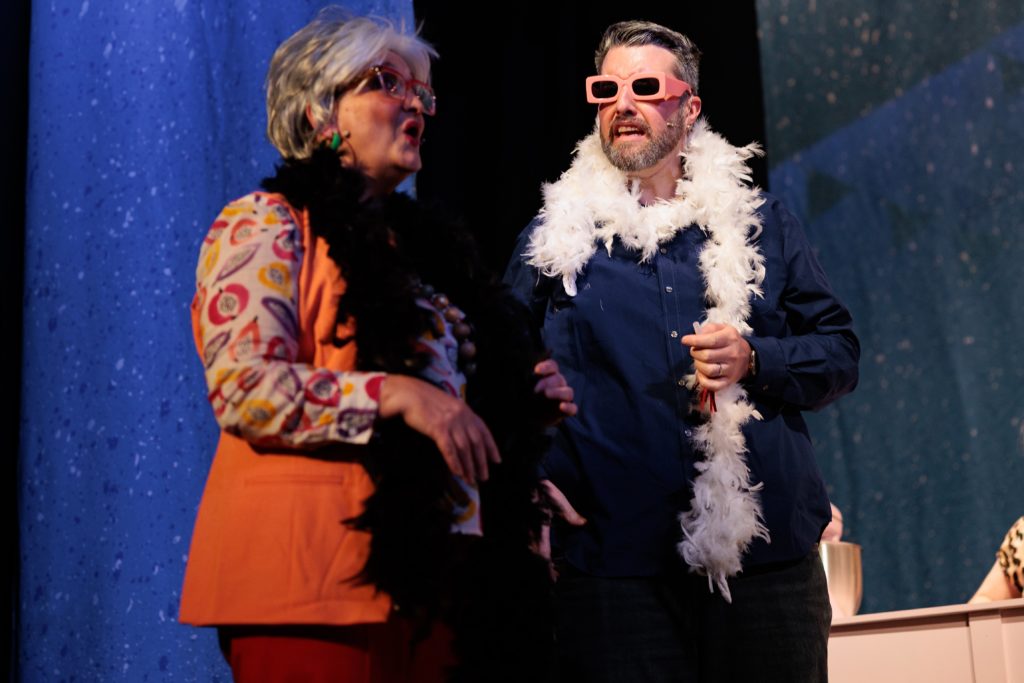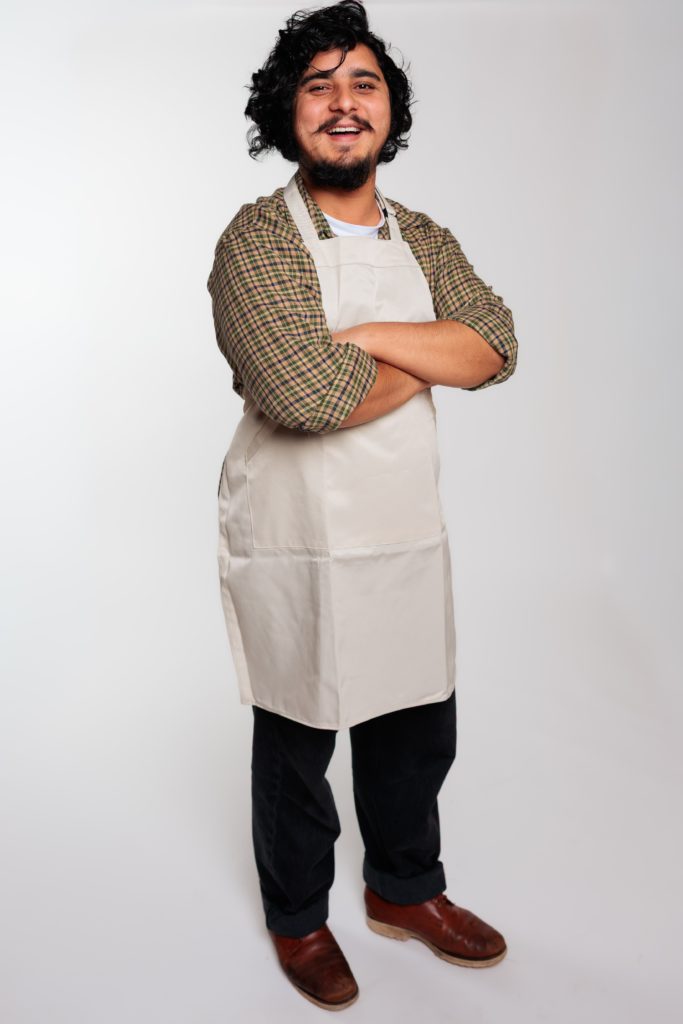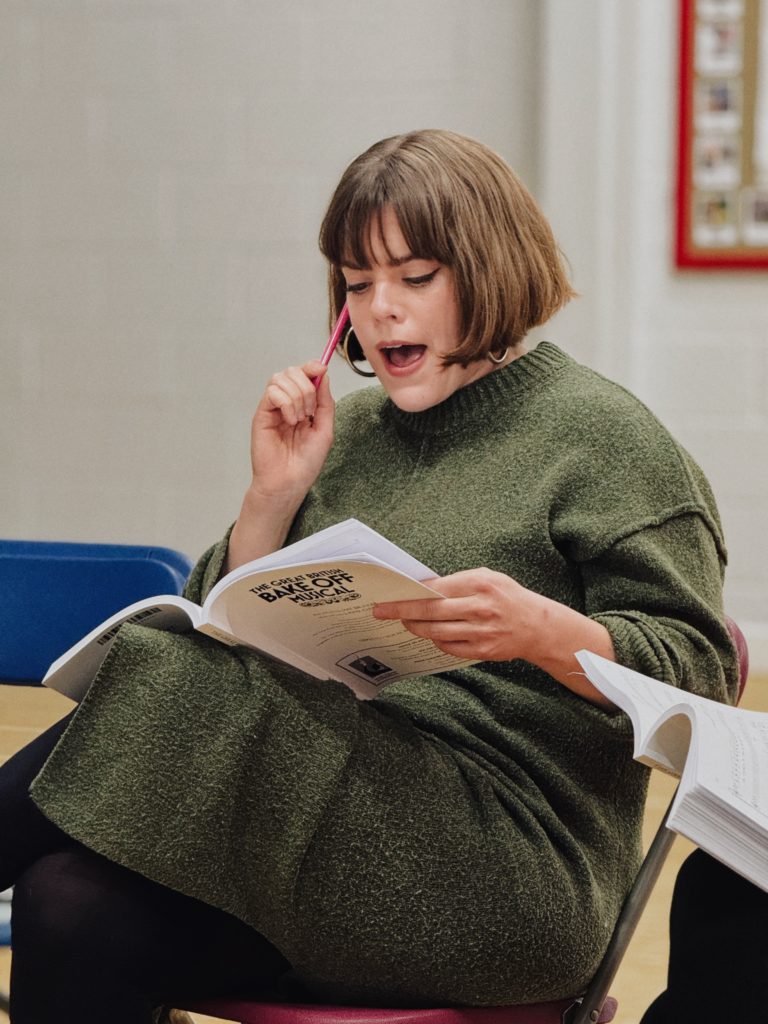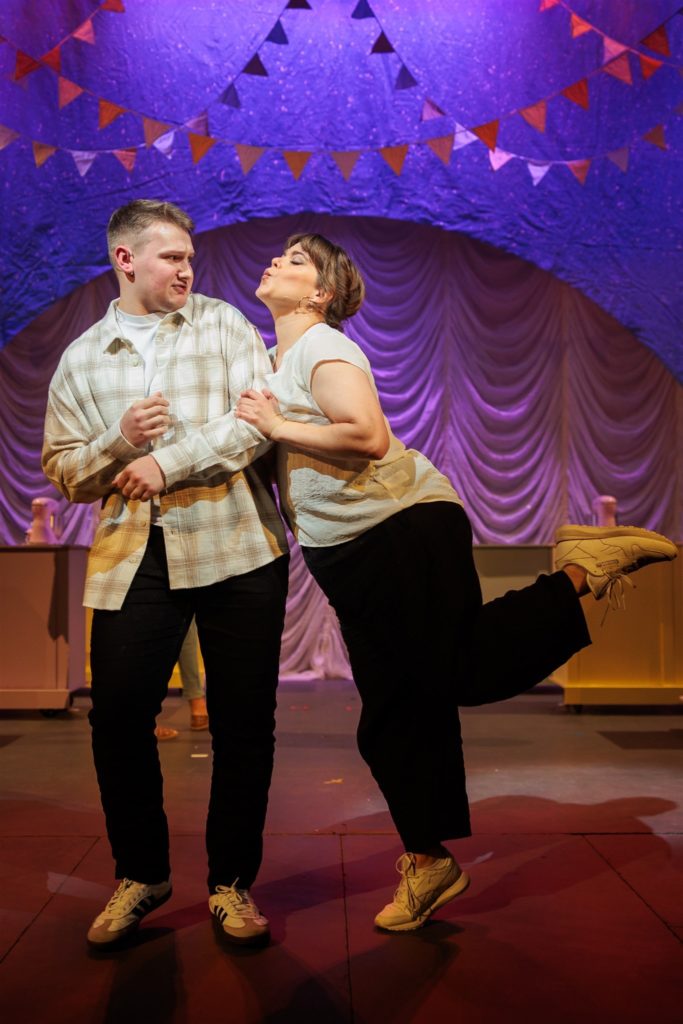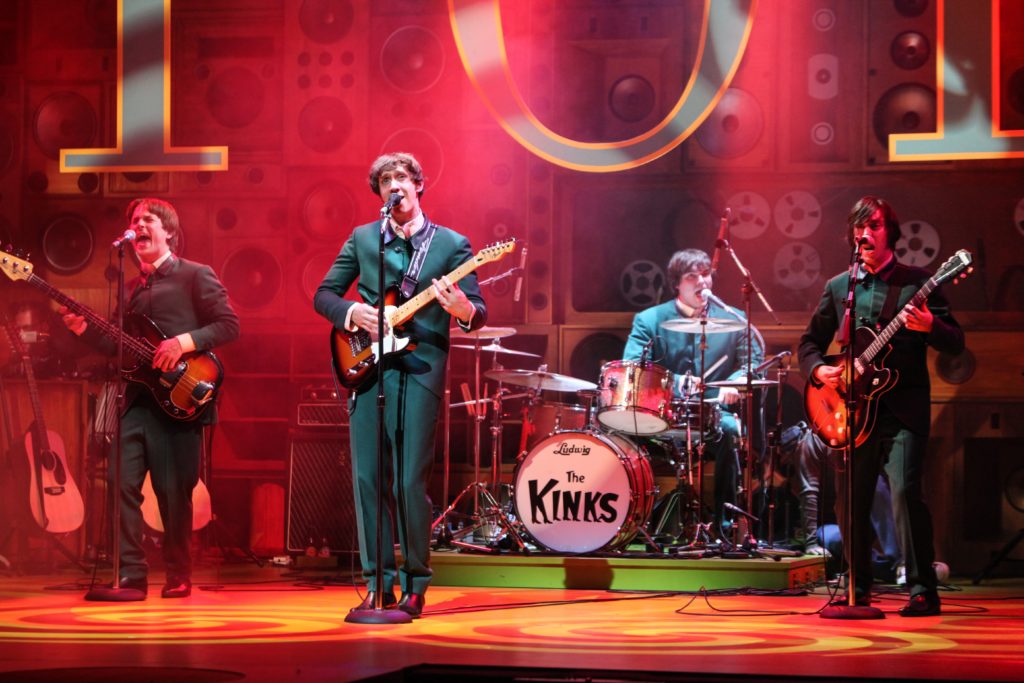
Danny Horn’s Ray Davies leading The Kinks in Sunny Afternoon, on tour at Grand Opera House, York. Picture: Manuel Harlan
SUNNY Afternoon’s Kinks songs for dark nights, Dibley comedic delights and drag diva Velma Celli’s frock rock catch Charles Hutchinson’s eye.
Musical of the week: Sonia Freidman Productions and ATG Productions present Sunny Afternoon, Grand Opera House, York, until Saturday, 7.30pm plus 2.30pm Wednesday, Friday and Saturday matinees
RETURNING to York for the first time since February 2017, four-time Olivier Award winner Sunny Afternoon charts the raw energy, euphoric highs, troubling lows, mendacious mismanagement and brotherly spats of Muswell Hill firebrands The Kinks, equipped with an original story (and nearly 30 songs) by frontman Ray Davies.
The script is by Joe Penhall, who says: “As a band The Kinks were the perennial outsider – punk before punk.” Box office: atgtickets.com/york.
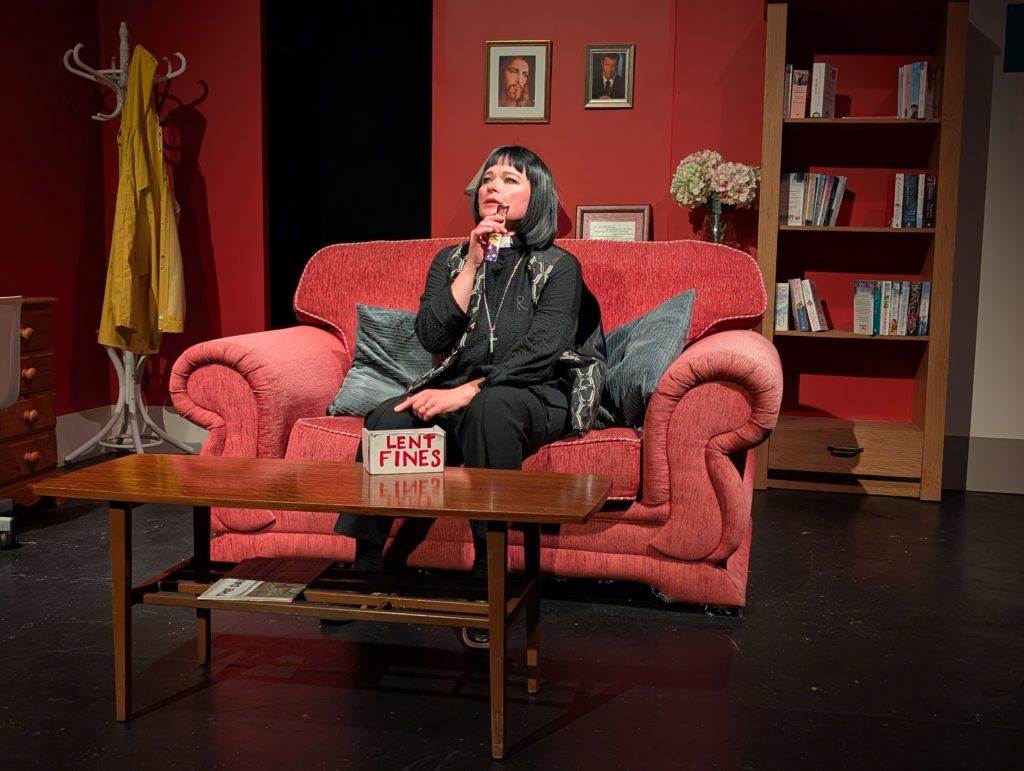
Nicki Clay’s Reverend Geraldine Granger in MARMiTE Theatre’s The Vicar Of Dibley at Theatre@41, Monkgate, York. Picture: Paul Miles
Village drama of the week: MARMiTE Theatre in The Vicar Of Dibley, Theatre:41, Monkgate, York, until Saturday,7.30pm plus 2.30pm Saturday matinee
NICKI Clay is going doubly Dibley for MARMiTE Theatre in the new York company’s debut production of The Vicar Of Dibley, having played Geraldine Grainger for The Monday Players in Escrick in May.
Martyn Hunter directs Ian Gower and Paul Carpenter’s cherry-picking of the best of Richard Curtis and Paul Mayhew-Archer’s first two TV series, bringing together all the favourite eccentric residents of Dibley as the new vicar’s arrival shakes up the parish council of this sleepy English village. Box office: tickets.41monkgate.co.uk.
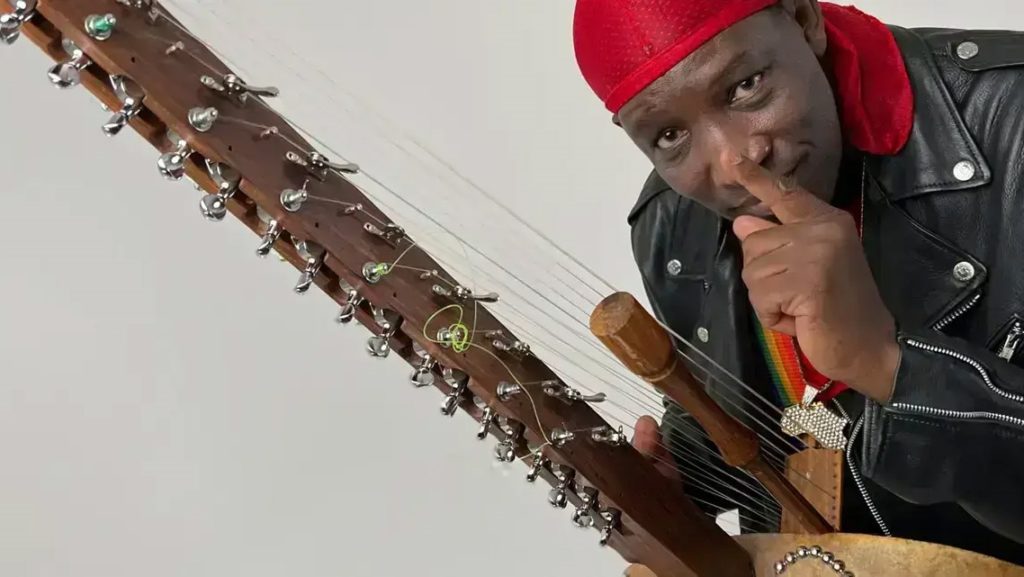
N’Faly Kouyaté: Dancing shoes recommended
African rhythms of the week: N’Faly Kouyaté, National Centre for Early Music, York, tonight, 7.30pm
AFTER gracing stages across the world with Afro Celt Sound System — where Celtic voices and instrumentation met the vibrant heartbeat of African rhythms — avant-garde griot N’Faly Kouyaté embarks on a profoundly personal journey.
This masterful Guinean multi-instrumentalist, inspired vocalist and living bridge between ancestral heritage and future sounds returns with his album Finishing, whose songs stir the soul, provoke reflection, elicit smiles and set bodies moving. Bring your dancing shoes! Box office: 01904 658338 or ncem.co.uk.
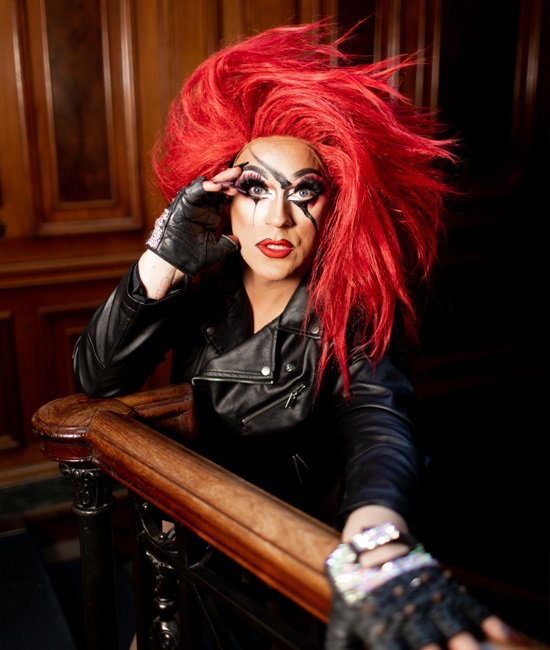
Velma Celli: Rock Queen with a nod to David Bowie’s Aladdin Sane slash. Picture: Sophie Eleanor Photography
Drag night of the week: Velma Celli: Rock Queen, York Theatre Royal, tonight, 7.30pm
YORK’S international drag diva deluxe Velma Celli follows up her iconic October 1 appearance in Coronation Street soapland withan “overindulgent evening celebrating and re-imagining the best of rock classics” with her band.
The alter ego of West End musical star Ian Stroughair, who has shone in Cats, Fame, Rent and Chicago, cabaret queen Velma’s live vocal drag act has been charming audiences for 14 years, whether at Yorktoberfest at York Racecourse, her Impossible Brunches at Impossible York, or in such shows as A Brief History Of Drag, My Divas, God Save The Queens and Divalussion (with Christina Bianco). Box office: 01904 623568 or yorktheatreroyal.co.uk.
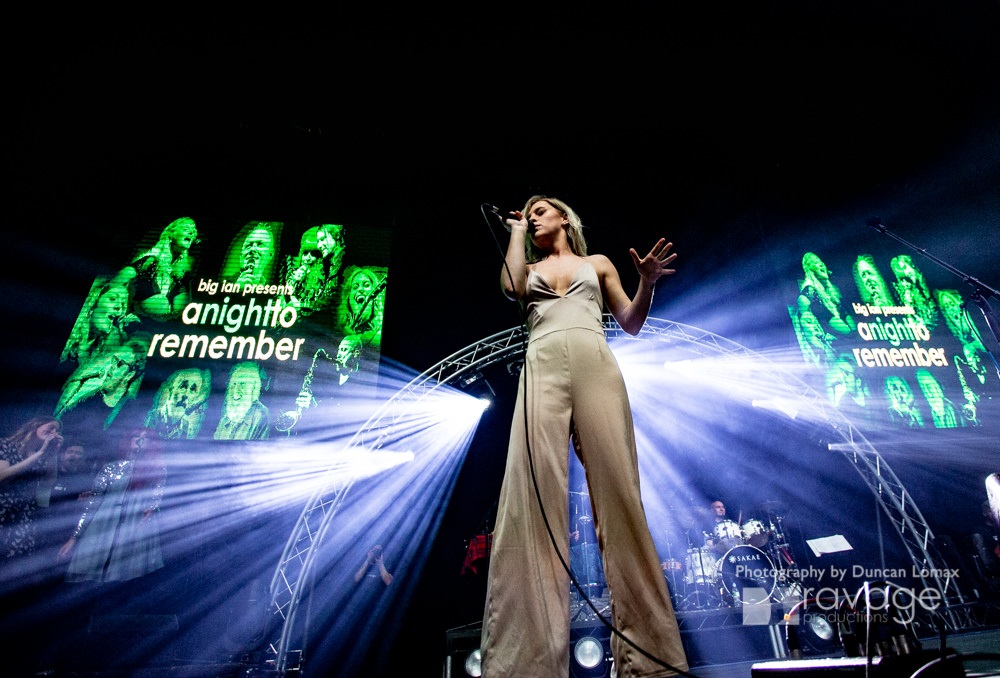
Beth McCarthy: Heading back home to play Big Ian’s A Night To Remember charity concert. Picture: Duncan Lomax., Ravage Productions
Charity event of the week: Big Ian’s A Night To Remember, York Barbican, tonight, 7.30pm
BIG Ian Donaghy hosts a “night of York helping York” featuring a 30-strong band led by George Hall with a line-up of York party band HUGE, Jess Steel, Beth McCarthy, Heather Findlay, Graham Hodge, The Y Street Band, Simon Snaize, Annie-Rae Donaghy, fiddler Kieran O’Malley, Samantha Holden, Las Vegas Ken and musicians from York Music Forum, plus a guest choir.
Proceeds from this three-hour fundraiser go to St Leonard’s Hospice, Bereaved Children Support York, Accessible Arts & Media and York dementia projects. Tickets update: Balcony seats still available at yorkbarbican.co.uk.
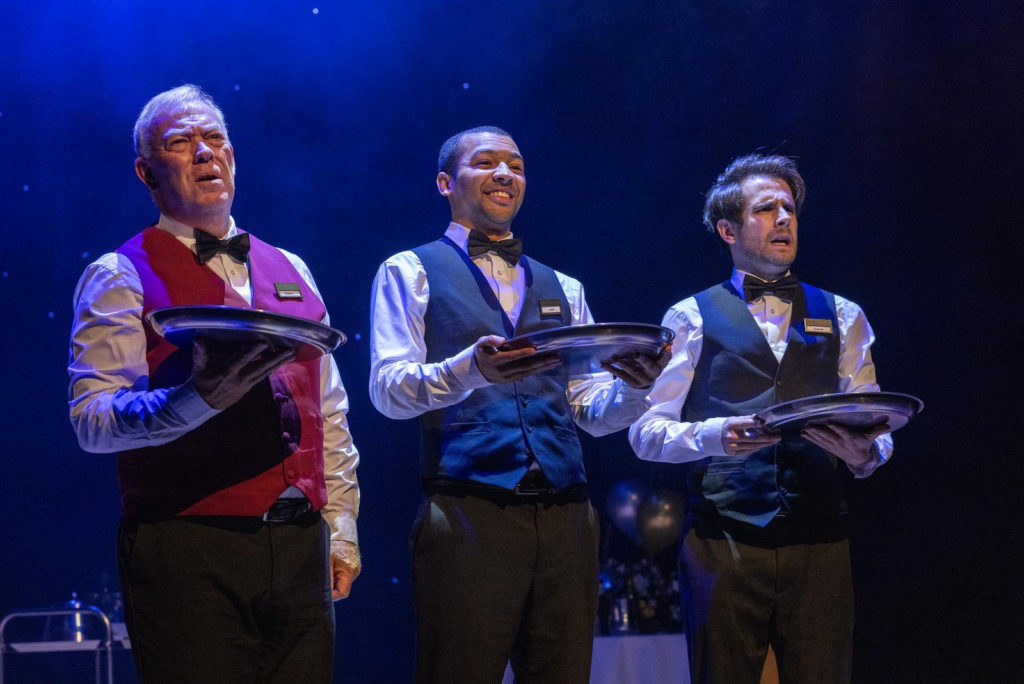
Staff woes: William Ilkley, left, Levi Payne and Dylan Allcock in John Godber’s Black Tie Ball, on tour at the SJT, Scarborough
One helluva party of the week: John Godber’s Black Tie Ball, Stephen Joseph Theatre, Scarborough, November 12 to 15, 7.30pm plus 1.30pm Thursday and 2.30pm Saturday matinees
ON the glitziest East Yorkshire fundraising night of the year, everyone wants to be there. The Bentleys are parked, the jazz band has arrived, the magician will be magic, but behind the bow ties, fake tans and equally fake booming laughter lie jealousies and avarice, divorces and affairs, as overdressed upstairs meets understaffed downstairs through a drunken gaze.
The raffle is ridiculously competitive, the coffee, cold, the service, awful, the guest speaker, drunk, and the hard -pressed caterers just want to go home. Welcome to the Brechtian hotel hell of John Godber’s satirical, visceral comedy drama, as told by the exasperated hotel staff, recounting the night’s mishaps at breakneck speed in the manner of Godber’s fellow wearers of tuxedos, Bouncers. Box office: 01723 370541 or sjt.uk.com.
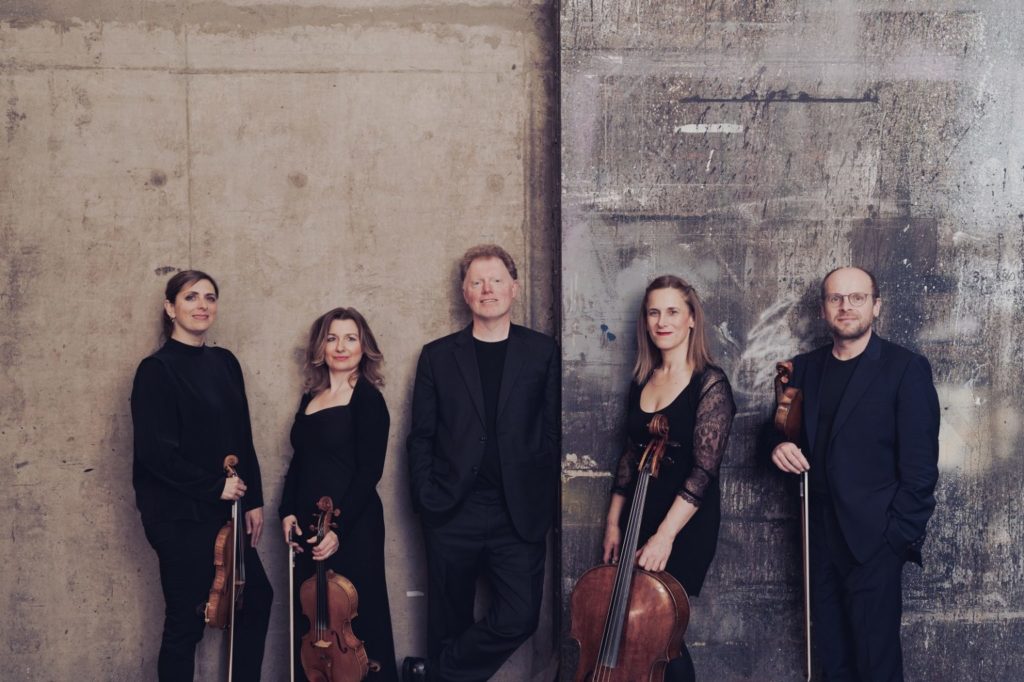
Ensemble 360: Performing works by Shostakovich and Dvořák at Helmsley Arts Centre. Picture: Matthew Johnson and Music in the Round
Classical matinee concert of the week: Ensemble 360, Helmsley Arts Centre, Sunday, 2.30pm
ENSEMBLE 360’s chamber musicians Benjamin Nabarro and Claudia Ajmone-Marsan, violins, Rachel Roberts, viola, Gemma Rosefield, cello, and Tim Horton, piano, perform the dramatic intensity and soaring lyricism of Dmitri Shostakovich’s Piano Quintet in G minor, Op. 57 and the radiant warmth and Czech folk-inspired melodies of Antonín Dvořák’s Piano Quintet No. 2 in A major, Op. 81, a piece cherished for its lush harmonies, spirited dances and seamless instrumental interplay. Box office: 01439 771700 or helmsleyarts.co.uk.
Rock’n’roll show of the week: Two Pianos, Pocklington Arts Centre, Thursday, 7.30pm
IN the words of Jerry Lew Lewis, “Two Pianos are awesome rockers”. Tomorrow night, David Barton and Al Kilvo bring their rock’n’roll piano show to Pocklington for a journey through the golden age of Elvis Presley, Chuck Berry, Fats Domino, Buddy Holly, Carl Perkins, Ray Charles, Wanda Jackson, Brenda Lee and, yes, the “The Killer” himself. Box office: 01759 301547 or pocklingtonartscentre.co.uk.
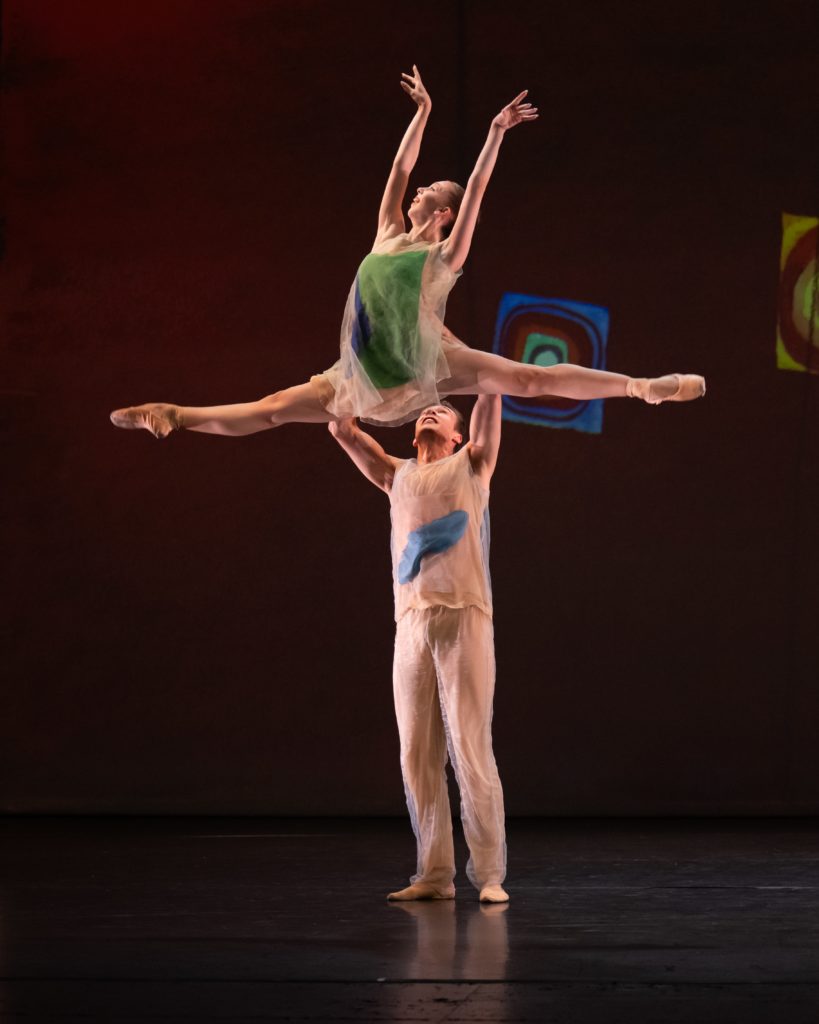
Dance show of the week: London City Ballet: Momentum, York Theatre Royal, Friday, 7.30pm (with post-show discussion); Saturday, 2.30pm and 7.30pm
LONDON City Ballet, former resident company of Sadler’s Wells, returns to York Theatre Royal with Momentum, a new repertoire that showcases artists rarely seen in the UK. Haieff Divertimento, an early George Balanchine work, was thought to be lost for 40 years after its premiere and remained unseen outside the USA until now. Emerging choreographer Florent Melac, premier danseur at Paris Opera Ballet, combines inventive transitions with intimate partnering in his fluid new work.
Alexei Ratmansky, New York City Ballet’s artist in residence, presents Pictures At An Exhibition, performed to Modest Mussorgsky’s eponymous score, set against a backdrop depicting Wassily Kandinsky’s paintings. Unseen in the UK since its 2009 premiere, Liam Scarlett’s Consolations & Liebestraum is a response to Franz Liszt’s piano score, depicting the life cycle of a relationship, its blossoming and later fracturing love. Box office: 01904 623568 or yorktheatreroyal.co.uk.


